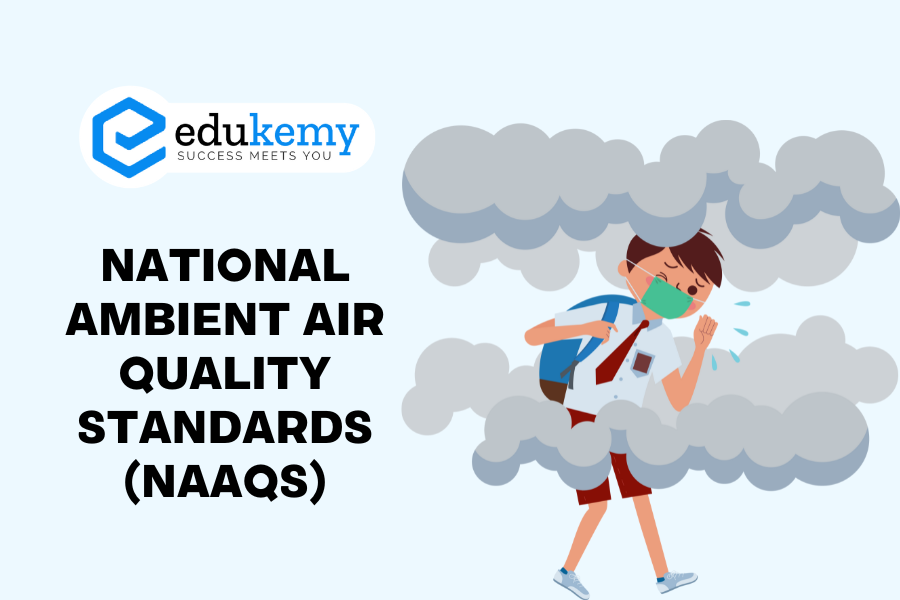- The Central Pollution Control Board (CPCB) has instituted national ambient air quality standards (NAAQS), ensuring consistent air quality standards across the country.
- The National Clean Air Programme (NCAP) was introduced nationwide in 2019 with the objective of reducing particulate matter levels by 20–30% in 132 cities by 2024.
- Failure to consistently meet the National Ambient Air Quality Standards (NAAQS) over a five-year period categorizes a city as non-compliant.
Contents
- 1 FAQs – National Ambient Air Quality Standards (NAAQS)
- 1.1 1-What is NAAQS?
- 1.2 2-What empowers the CPCB to establish air quality standards?
- 1.3 3-When were the prevailing NAAQS introduced, and what was their objective?
- 1.4 4-What are Primary Standards under NAAQS?
- 1.5 5-What are Secondary Standards under NAAQS?
- 1.6 6-Which pollutants are covered under NAAQS?
- 1.7 7-What is the National Air Monitoring Programme (NAMP)?
- 2 In case you still have your doubts, contact us on 9811333901.
NAAQ STANDARD
- The Air (Prevention and Control of Pollution) Act empowers the Central Pollution Control Board (CPCB) to establish air quality standards.
- Subsequently, in November 2009, the CPCB introduced the prevailing National Ambient Air Quality Standards.
- The regulations set in 2009 standardized national air quality benchmarks and significantly reduced the permissible limits for various pollutants.
The standards are categorized into two types:
- Primary Standards: These are designed to safeguard human health with an ample margin of safety, considering vulnerable groups such as young children, the elderly, and individuals with respiratory conditions.
- Secondary Standards: Formulated to protect against any known or anticipated adverse effects of a pollutant on public welfare, property, traffic safety, economic values, and personal comfort and well-being.
POLLUTANTS COVERED
The National Ambient Air Quality Standards encompass a range of pollutants, including:
- Sulphur dioxide (SO2)
- Nitrogen dioxide (NO2)
- Particulate matter with a size less than 10 microns (PM10)
- Particulate matter with a size less than 2.5 microns (PM2.5)
- Ozone
- Lead
- Carbon monoxide (CO)
- Arsenic
- Nickel
- Benzene
- Ammonia
- Benzopyrene
NAAQS – MONITORING
- The National Air Monitoring Programme (NAMP) is a comprehensive initiative led by the Central Pollution Control Board, aimed at monitoring the levels of crucial air pollutants, reporting violations, and conducting research on pollution trends.
- NAMP actively monitors the levels of Sulphur Dioxide (SO2), Nitrogen Dioxide (NO2), Suspended Particulate Matter (SPM), and Respirable Suspended Particulate Matter (RSPM / PM10) at 342 operational stations situated in 127 cities across India.
- The program regularly publishes a list of cities that violate air quality standards, which can be accessed here.
- Additionally, on November 29, 2011, the Ministry of Environment and Forests (MoEF) announced an expansion of monitoring efforts to include PM2.5 at selected locations in major cities.
Recent Scenario – NAAQS
- In the recent scenario, it is estimated that India’s population-weighted mean annual ambient PM2.5 exposure in the reference year, 2015, was 55 g/m3.
- Exposure levels vary significantly across the country, with the Delhi National Capital Region (Delhi NCR) experiencing the highest exposure.
- Throughout India, annual PM2.5 exposure surpasses recommended levels in 58%, 67%, 83%, 97%, and 99% of districts, respectively.
- All districts in Northwest India and the Gangetic Plain exhibit yearly exposure levels higher than the National Ambient Air Quality Standards (NAAQS).
- While 82% and 50% of districts in Central and West India exceed the NAAQS, only 22%, 19%, and 2% of districts in North, Northeast, and South India, respectively, surpass these standards.
FAQs – National Ambient Air Quality Standards (NAAQS)
1-What is NAAQS?
A: NAAQS stands for National Ambient Air Quality Standards, which are uniform standards set by the Central Pollution Control Board (CPCB) to ensure consistent air quality across the nation.
2-What empowers the CPCB to establish air quality standards?
A: The Air (Prevention and Control of Pollution) Act empowers the CPCB to establish air quality standards in India.
3-When were the prevailing NAAQS introduced, and what was their objective?
A: In November 2009, the CPCB introduced the prevailing National Ambient Air Quality Standards with the goal of standardizing air quality benchmarks and reducing permissible limits for various pollutants.
4-What are Primary Standards under NAAQS?
A: Primary Standards are designed to protect human health with a sufficient margin of safety, considering vulnerable groups such as young children, the elderly, and individuals with respiratory conditions.
5-What are Secondary Standards under NAAQS?
A: Secondary Standards are formulated to protect against any known or anticipated adverse effects of pollutants on public welfare, property, traffic safety, economic values, and personal comfort and well-being.
6-Which pollutants are covered under NAAQS?
A: NAAQS covers a range of pollutants, including Sulphur dioxide (SO2), Nitrogen dioxide (NO2), Particulate Matter (PM10 and PM2.5), Ozone, Lead, Carbon monoxide (CO), Arsenic, Nickel, Benzene, Ammonia, and Benzopyrene.
7-What is the National Air Monitoring Programme (NAMP)?
A: NAMP is a nationwide initiative led by the CPCB to monitor levels of key air pollutants, report violations, and conduct research on pollution trends.
In case you still have your doubts, contact us on 9811333901.
For UPSC Prelims Resources, Click here
For Daily Updates and Study Material:
Join our Telegram Channel – Edukemy for IAS
- 1. Learn through Videos – here
- 2. Be Exam Ready by Practicing Daily MCQs – here
- 3. Daily Newsletter – Get all your Current Affairs Covered – here
- 4. Mains Answer Writing Practice – here

